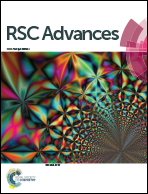Toward bioenergy recovery from waste activated sludge: improving bio-hydrogen production and sludge reduction by pretreatment coupled with anaerobic digestion–microbial electrolysis cells
Abstract
In this study, a novel technology named pretreatment coupled with anaerobic digestion–microbial electrolysis cells (AD–MECs) for waste activated sludge (WAS) reduction and renewable bioenergy recovery has been investigated. The results showed that, compared with the control pretreatment, the three pretreatment methods used greatly enhanced the performance of the AD–MECs process, and efficient sludge reduction was achieved, especially in heat-alkaline pretreatment, 36.9% and 46.7% for total suspended solid (TSS) and volatile suspended solid (VSS) removal in 6 days. MECs fed with fermented WAS, displayed positive potential for bioenergy recovery, and the highest bio-hydrogen yield was 20.30 mg H2/g VSS. Kinetic models indicated that with initial concentrations of soluble organic matter increasing, the bio-hydrogen yields of MECs increased linearly (R2 = 0.8903–0.9742). The results above suggested that the novel technology proposed in this work showed attractive potential for renewable bioenergy recovery and sludge reduction.


 Please wait while we load your content...
Please wait while we load your content...